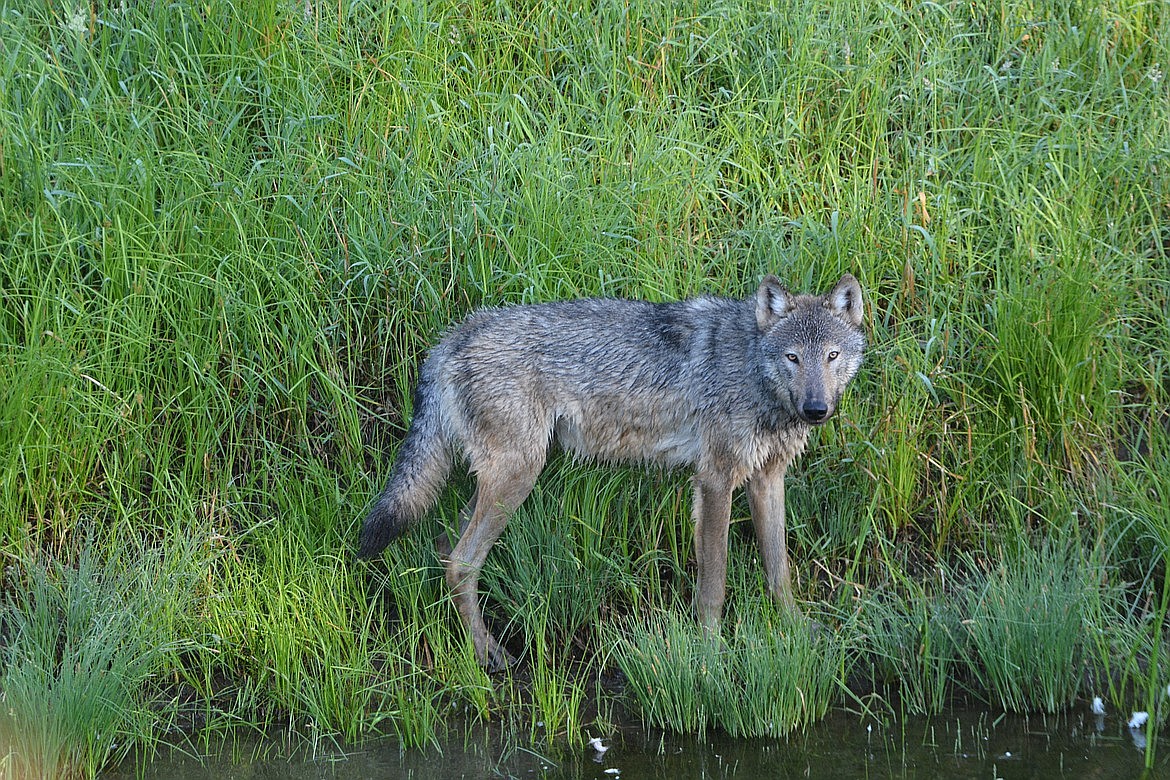In Idaho, cattle can conquer wolves
▶️ Listen to this article now.
Supporters of a bill that would cut the state wolf population by 93.3% say it would save the backbone of Idaho’s economy — cattle.
After passing the Senate 58-11-1, SB 1211 is heading to Gov. Brad Little for consideration.
Sponsored by House Majority Leader Mike Moyle, R-Star, the legislation aims to protect Idaho’s wildlife and cattle population through liberalized hunting and trapping.
The legislation permits free rein hunting, trapping and snaring methods, including snowmobiles and ATVs to hunt wolves on a single tag. The measure also allows, on private land, the killing of newborn pups and nursing mothers.
Nearly 30 retired state, federal and tribal wildlife managers sent a letter Wednesday to Little asking him to veto the bill.
“Sportsmen and wildlife managers in Idaho and around the world have long opposed unethical practices like these, since they violate ‘fair-chase’ principles giving hunters an improper advantage over wildlife,” the group wrote in the letter, which was obtained by The Associated Press.
But backers say the changes to Idaho law could help reduce the wolf population from about 1,500 to 150, alleviating wolf attacks on cattle, sheep and wildlife, the Associated Press said. Cattle and sheep ranchers say they lose hundreds of thousands of dollars a year.
A backer of the legislation, the Idaho Cattle Association, frequently talks about how to defend the state’s livestock better, ICA Executive Vice President Cameron Mulrony told The Press.
"Agriculture in Idaho, specifically cattle, is a vital part of our state and our economy, and will be for years to come,” Mulrony said. “We need to protect not only our livelihoods and businesses but also the game population in Idaho.”
Wolves were reintroduced in central Idaho in the late 1990s after being nearly wiped out in the early 1970s and declared endangered in 1974 under the Endangered Species Act.
Mulrony said that over the past few decades, particularly in recent years, he and other Idaho residents have noticed considerably more elk and deer movement in the south-central and southern part of the state — bringing wolves, a predator, with them. Subsequently, Mulrony said the ICA had noticed increased cattle depredation.
“A certain amount of depredation is expected, but with the movement of deer and elk, it has drastically increased,” Mulrony said.
Idaho Fish and Game Public Information Supervisor Roger Phillips told The Press that based on recent state data, deer, moose and elk species have been holding steady around the state. Notably, elk and whitetail deer populations are robust, and mule deer have seen only a slight decline in some areas around the state.
Citing a 2017 study by Oregon State University, University of Idaho, and the U.S. Department of Agricultural Research Service, Mulrony said ranchers and government officials had linked increased loss and injury of livestock to areas where wolves have been reintroduced.
The project found that ranchers have reported a “loss of body condition in cattle and lower calving rates which directly impact ranch income,” increased stress on livestock and ranching families, and increased injury to livestock.
The ICA has reported that many cattle are experiencing stress from higher levels of depredation, which affects the industry as a whole.
“Meat and cattle production quality is sold on weight. When you take cattle and calves in an area that is experiencing stress, it reduces the cattle’s ability to take care of itself,” Mulrony said. “Our industry is greatly impacted by this.”
Per U.S. Fish and Wildlife Service regulations, Idaho is mandated to have 100 wolves and 10 breeding pairs before the species is considered at risk. State regulations increased the number from 100 to 150.
For the past two years, population counts from Idaho Fish and Game, which monitors the species under the 2002 Wolf Management Plan, have sat steadily around 1,500, Phillips said. The written language of SB 1211 does not specify a limit to which wolves can be harvested, but since the first wolf hunting season, IDFG has reported an increased number of kills every year.
“We had our first wolf hunting season in 2010, and it was a seven-month season. We sold over 31,000 tags, and hunters took 188 wolves,” Phillips said. “Fast forward. We are about 500 wolves with much longer seasons and trapping as well.”
The Fish and Game Commission voted earlier this year in opposition to SB 1211, Commission Chairman Brad Corkill said Friday.
“They are changing the season for hunting wolves and season setting is one of the responsibilities of the commission set by statute,” Corkill told The Press. “To tamper with that sets what we consider to be a very dangerous precedent.”
Having served on the commission many years, Corkill, a North Idahoan, said he could talk for hours about wolf management. Speaking for himself and not on behalf of the commission, Corkill said he strongly opposed the legislation and is concerned about using snares year-round and the risk it could increase the unintentional capture of animals like grizzly bears.
“I personally don’t think that the parties involved in this gave it the time and the consideration that it so richly deserves,” he said. “I feel that it’s possible the consequences of this bill could be very counterproductive to its stated purpose.”



